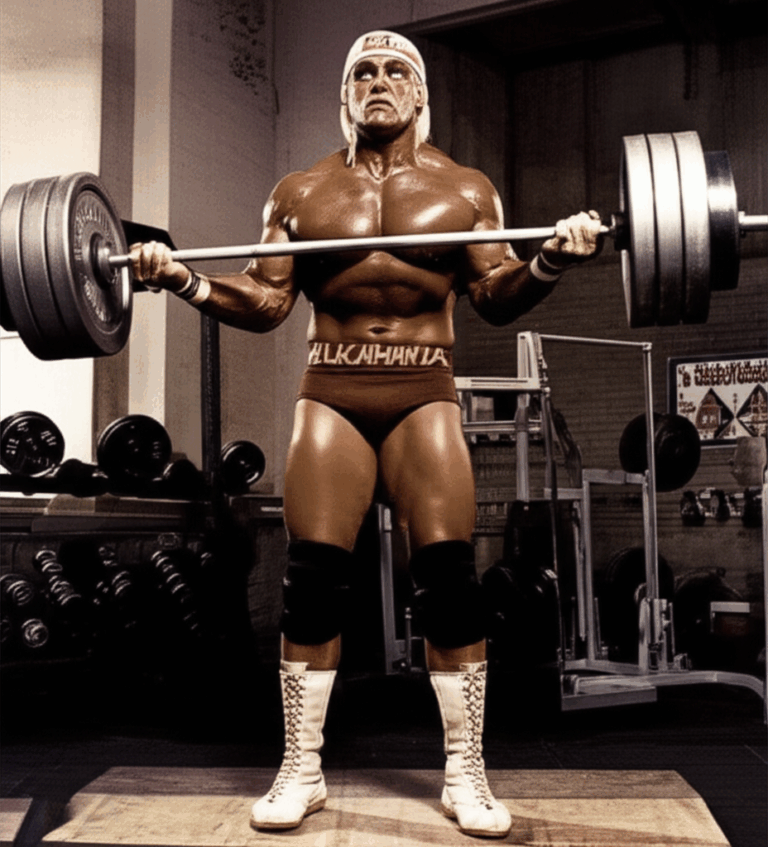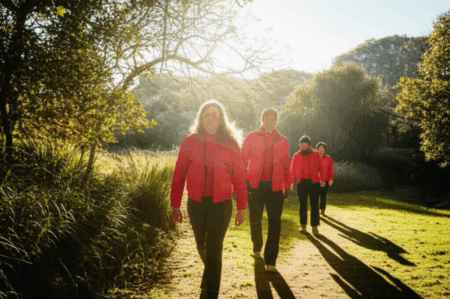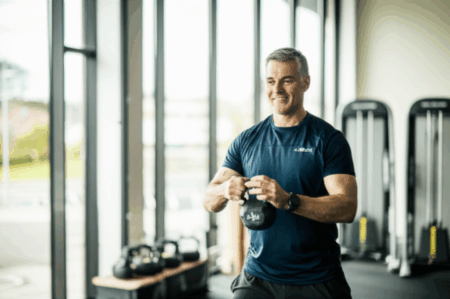Hulk Hogan, born Terry Gene Bollea, remains one of professional wrestling’s most iconic figures, recognized for his formidable physique and “Hulkamania” era dominance. After a career spanning decades, the legendary wrestler has significantly adjusted his workout and diet regimens, transitioning from the intense, high-calorie demands of his wrestling prime to a more health-conscious, organic lifestyle focused on longevity and injury management.

The “Hulkamania” Era: Fueling a Wrestling Machine
During the peak of his wrestling career in the 1970s and 80s, Hogan’s demanding schedule, which often included up to 400 matches annually, necessitated a diet exceptionally high in calories and protein to support immense strength and endurance.
High-Calorie, Protein-Heavy Diet
His daily eating habits during this period were geared towards raw fuel, often lacking in nutritional balance. A typical breakfast could consist of “twelve fried eggs, two large sausage patties, and a bowl of oatmeal cooked with copious amounts of butter,” a meal estimated to be between 1,300 to 2,000 calories. Lunch and dinner often involved dining at chain restaurants, focusing on protein-rich dishes like grilled steak, fried chicken, or omelets with fried potatoes, chosen for convenience during constant travel. These meals, while providing necessary energy, were often high in sodium, saturated fats, and lacked sufficient vegetables or fruits.
Pre and Post-Match Habits
Notably, Hogan’s pre-match routine included three Miller Lites and two Tylenol pills, a common practice in wrestling culture at the time to manage pain and relax. Post-match, he would frequently consume up to twelve cans of Miller Lite, sometimes paired with fast food, which, while offering temporary relief, hindered muscle recovery and strained his liver.
Wrestling Era Training
While there isn’t one singular “Hulk Hogan workout” from this time, his training focused heavily on weightlifting, compound movements, and cardio to maintain his massive physique. He incorporated exercises like squats, bench press, leg press, deadlifts, and pull-ups, often with minimal rest periods to keep his heart rate elevated. He even had a substantial home gym to facilitate his intense workouts.

The Shift Towards a Healthier Lifestyle
As Hogan aged and faced numerous injuries and surgeries—reportedly around 25 in the last decade, including knee and hip replacements, and back surgeries—his body “shut down” on him, prompting a significant overhaul of his diet and workout philosophy. He realized the need to prioritize health over simply maintaining a large physique.
Embracing Organic and Clean Eating
In recent years, Hogan has transitioned to a “clean and organic” diet, eliminating sugar and alcohol completely. This change was driven by a desire to reduce inflammation and regain a sense of feeling “alive” rather than “numb.” He now weighs a lean 265 pounds, a significant reduction from his heavier wrestling days.
His current daily diet typically includes:
- Breakfast: A cup of unsweetened yogurt, one ripe banana, and organic black coffee. This provides probiotics, potassium, energy, and metabolism-boosting benefits. He has moved away from daily eggs, now consuming egg whites every three or four days.
- Lunch: Proteins such as grilled chicken, steak, or raw tuna (sashimi), often paired with a green salad dressed with olive oil and vinegar. This focus on lean protein supports muscle maintenance, while salads add fiber and vitamins.
- Dinner: Similar to lunch, consisting of organic steak, grilled salmon, or chicken, accompanied by steamed vegetables like broccoli or asparagus. He prioritizes fresh, minimally processed foods to reduce inflammation and aid post-surgical recovery.
- Snacks: Organic crackers or almonds between meals to maintain energy levels. He also occasionally indulges in non-dairy ice cream as a healthier dessert option.
- Hydration: Primarily drinks Mountain Valley Water, preferably from glass bottles.
Supplements also play a role in his current diet, providing support and minerals that are hard to obtain from food alone, such as creatine, proteins, and omega-3. He also uses CBD oil to manage chronic pain, replacing traditional painkillers like Tylenol.
Adapted Workout Routine
Hogan continues to exercise daily, but his routine has been modified to accommodate past injuries and surgeries, focusing on “training smart” rather than just “training hard.” His current fitness goal is to maintain a physique that allows him to “look better than the 30 or 35-year-old guy” when walking on the beach.
His weekly training split typically includes:
- Monday: Chest and back workout.
- Tuesday: Shoulders, a lot of cardio, and abdominal work.
- Wednesday: Arms (biceps and triceps).
- Thursday: Legs.
- Friday: Often a rest day, acknowledging the importance of muscle recovery.
He emphasizes consistency in his workouts, even on days when he doesn’t feel motivated, citing Arnold Schwarzenegger’s philosophy of still going to the gym to do lighter weights to get into rhythm. Hogan utilizes specific equipment to train around injuries, such as a “crippler” machine and preacher curls. His home gym, while still present, has been scaled down from its larger size during his wrestling prime.







